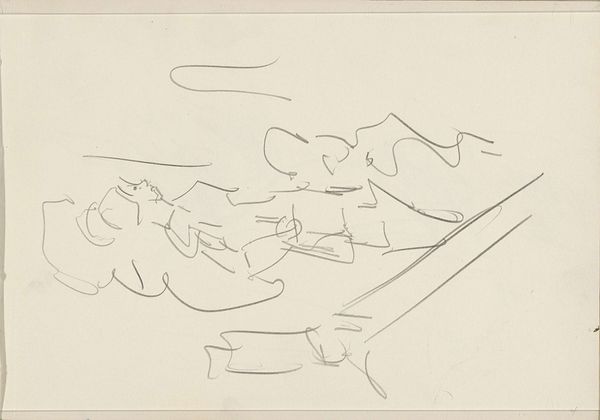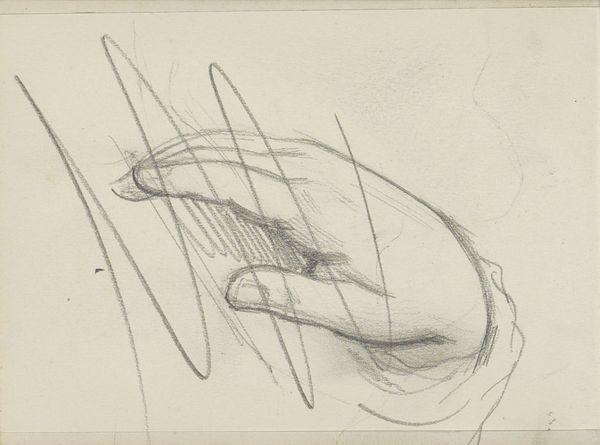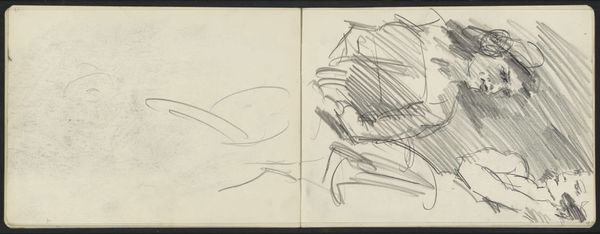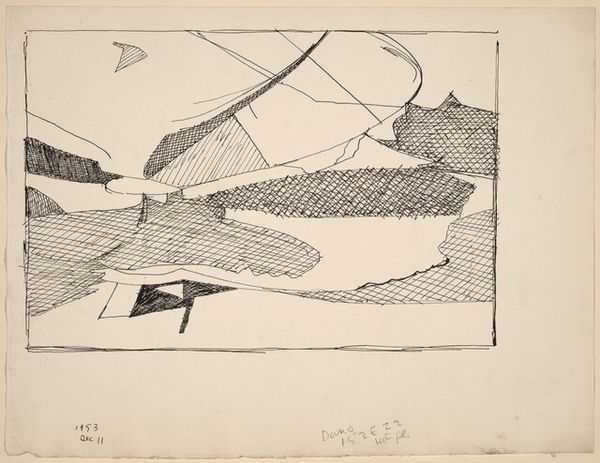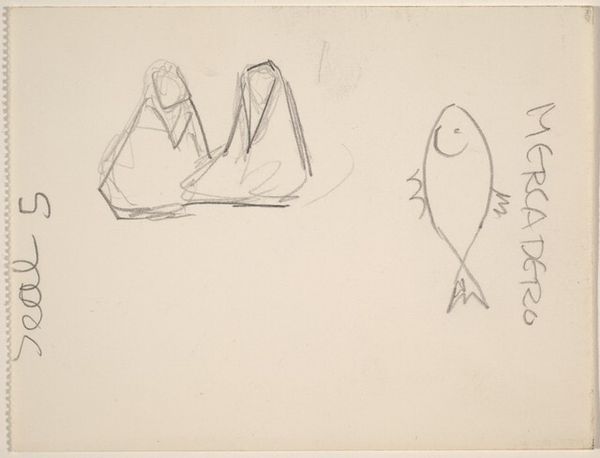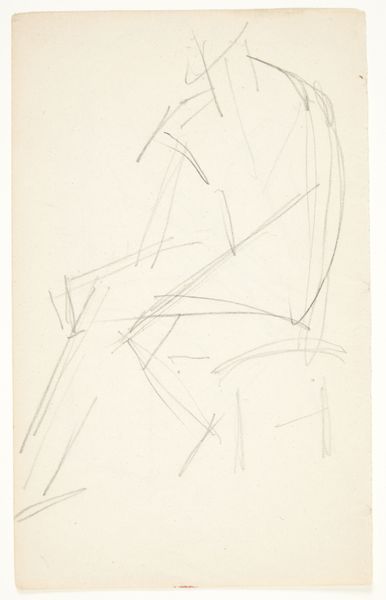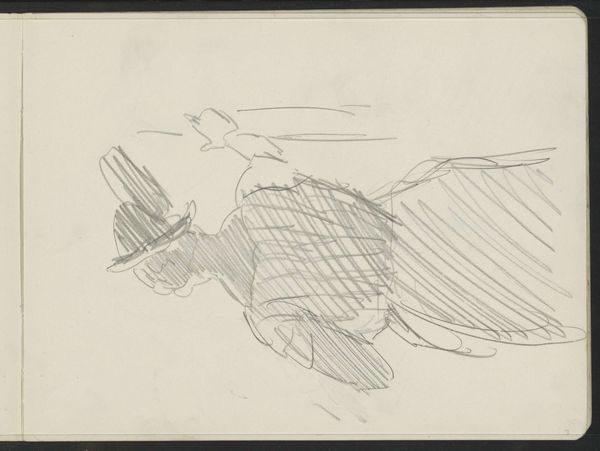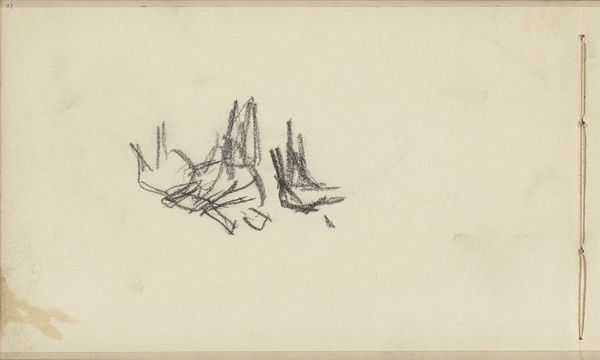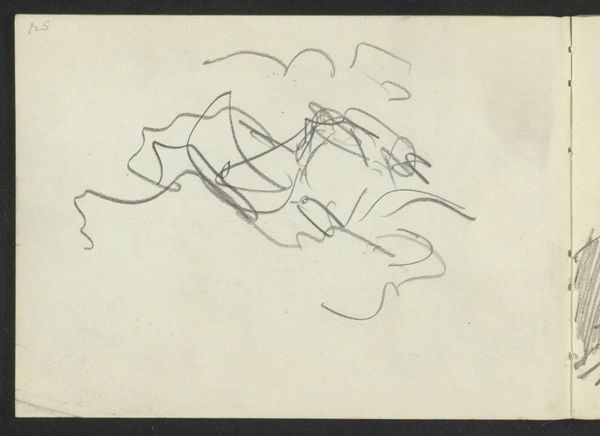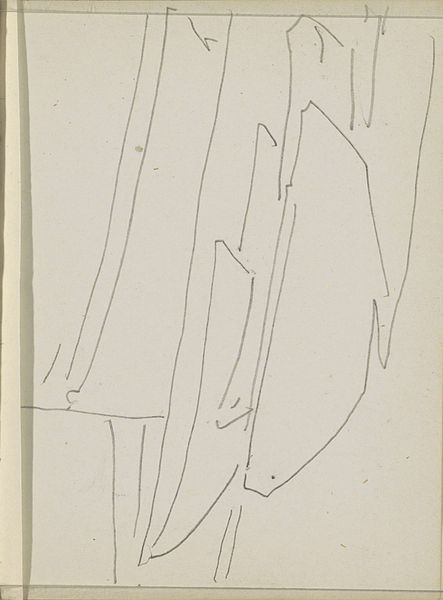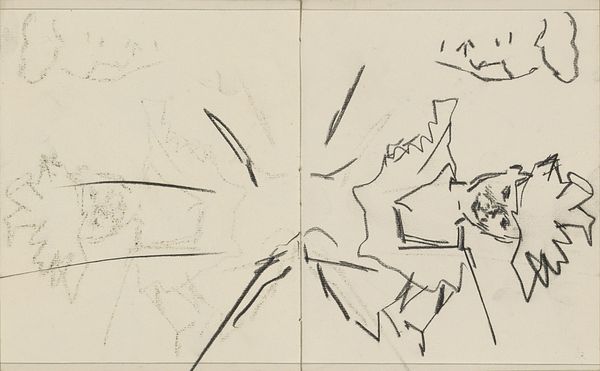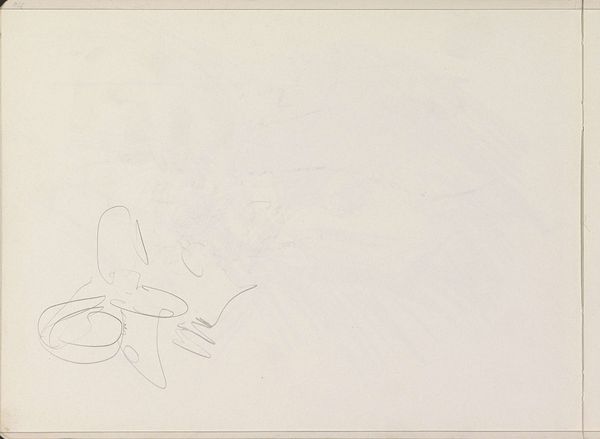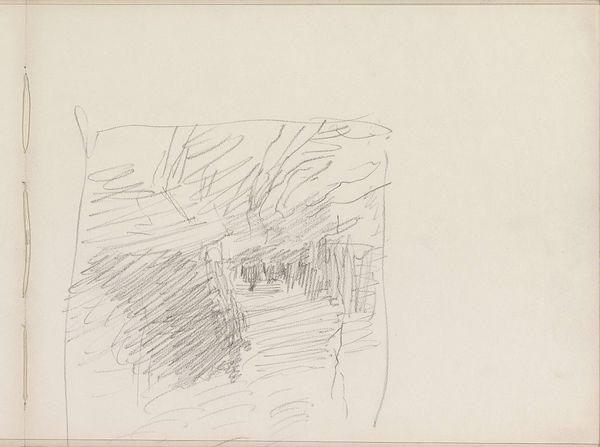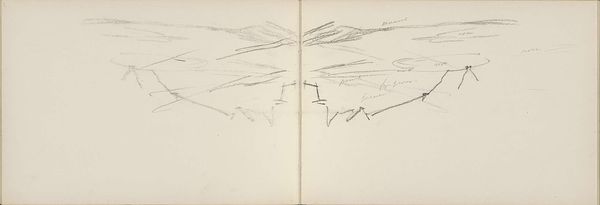
drawing, paper, pencil
#
drawing
#
paper
#
geometric
#
pencil
#
abstraction
Dimensions: sheet: 27.9 x 35.6 cm (11 x 14 in.) overall size: 27.9 x 50.2 cm (11 x 19 3/4 in.)
Copyright: National Gallery of Art: CC0 1.0
Editor: So, this is Alexander Calder's "Four Petals," a pencil drawing on paper from around 1960. It feels so delicate and tentative. I’m curious, what do you see when you look at this drawing? Curator: Well, let’s start with the materials. Pencil and paper. Everyday, accessible, industrial products. Calder’s choice here undermines the traditional hierarchy that elevates oil paint and canvas. The mass-produced nature of these materials invites a consideration of art’s accessibility. Do you think he considered that, bringing art to the masses? Editor: That’s interesting… maybe! I guess I was more focused on the "Four Petals" suggested by the title, but seeing it as…democratizing…that’s new. What about the relationship of those abstracted, geometric forms? Curator: Exactly! Consider how the means of production impacts reception. Pencil lines are inherently reproducible, which shifts the value away from the "unique" artwork towards something more egalitarian. The implied movement inherent in the forms also plays with this tension. This isn't just about still life. This is the process being sketched. Editor: I can see that. It’s like he's showing us his thinking, his method. I always thought of him as a sculptor, so the idea of the drawing as its own form is a little challenging. Curator: But isn't that the beauty of looking at process? To dismantle assumptions and look for new values? How labor intersects the art. That this was maybe preliminary to sculpture allows us to see the labor of the work and process. Editor: I see what you mean. Thinking about it that way really changes how I experience the piece. I was thinking too much about finished artwork. Thanks!
Comments
No comments
Be the first to comment and join the conversation on the ultimate creative platform.
